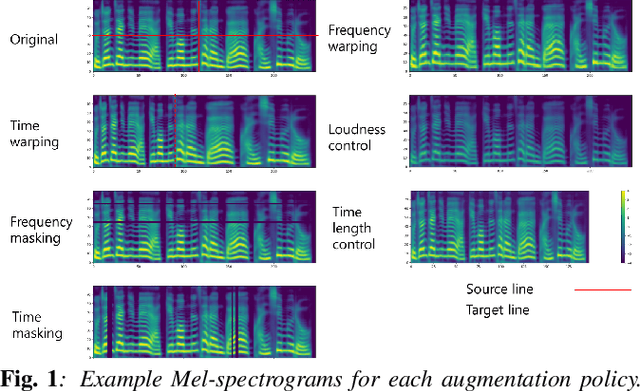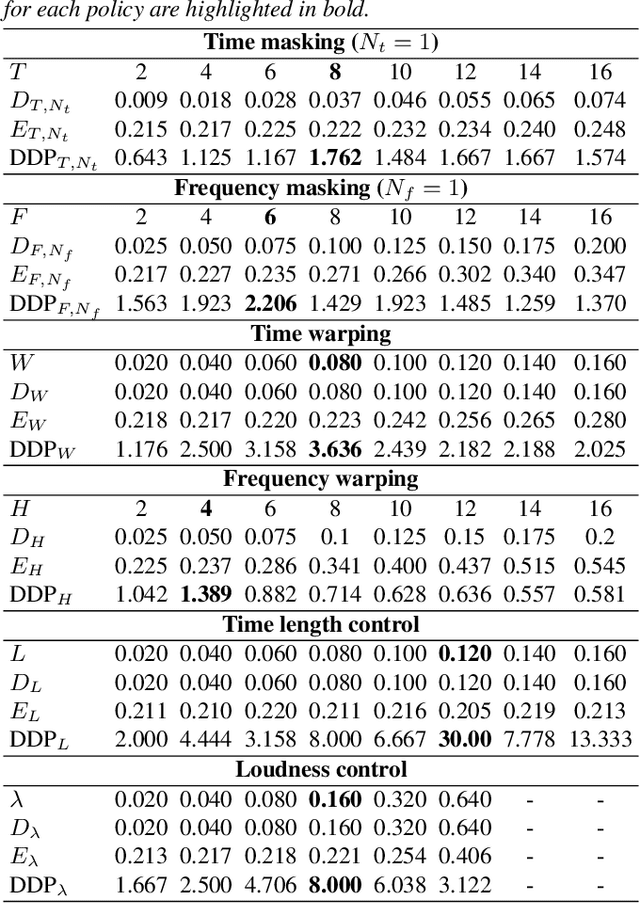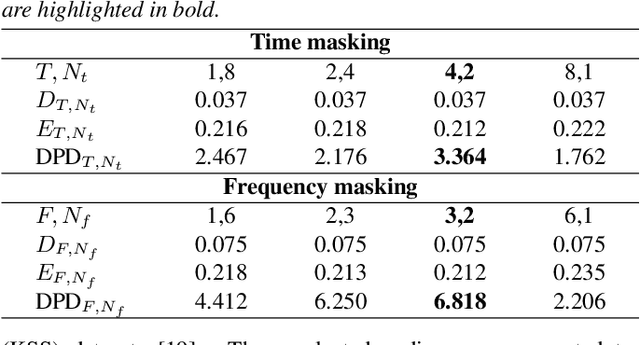Mel-spectrogram augmentation for sequence to sequence voice conversion
Paper and Code
Jan 06, 2020



When training the sequence-to-sequence voice conversion model, we need to handle an issue of insufficient data about the number of speech tuples which consist of the same utterance. This study experimentally investigated the effects of Mel-spectrogram augmentation on the sequence-to-sequence voice conversion model. For Mel-spectrogram augmentation, we adopted the policies proposed in SpecAugment. In addition, we propose new policies for more data variations. To find the optimal hyperparameters of augmentation policies for voice conversion, we experimented based on the new metric, namely deformation per deteriorating ratio. We observed the effect of these through experiments based on various sizes of training set and combinations of augmentation policy. In the experimental results, the time axis warping based policies showed better performance than other policies.
 Add to Chrome
Add to Chrome Add to Firefox
Add to Firefox Add to Edge
Add to Edge